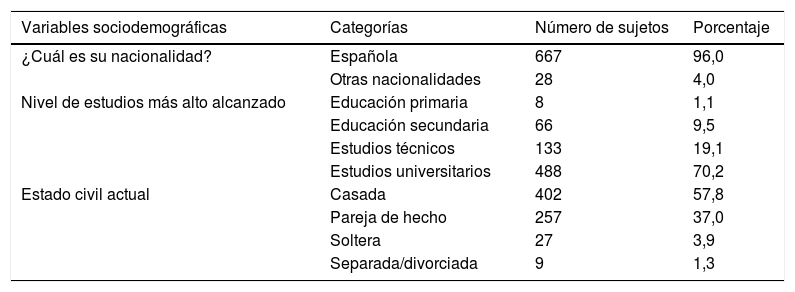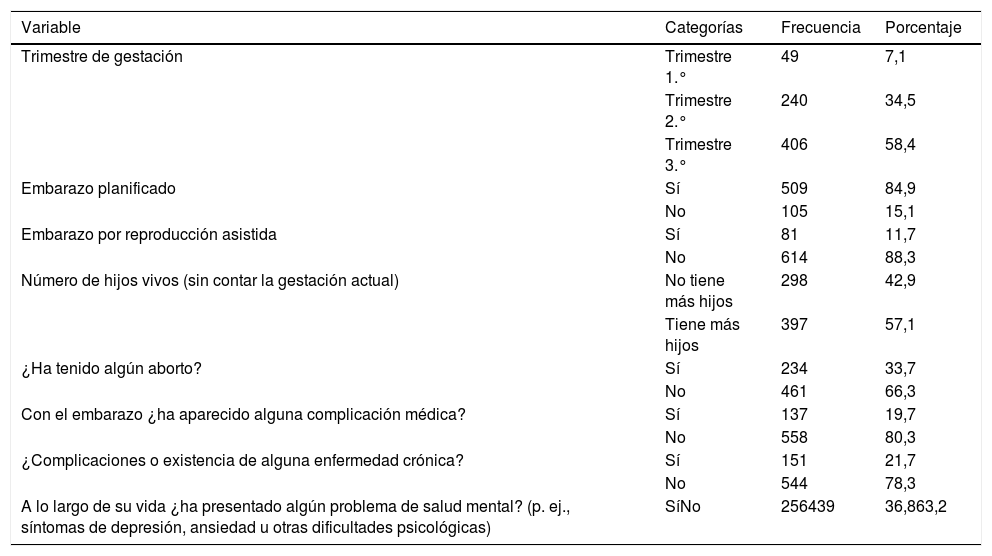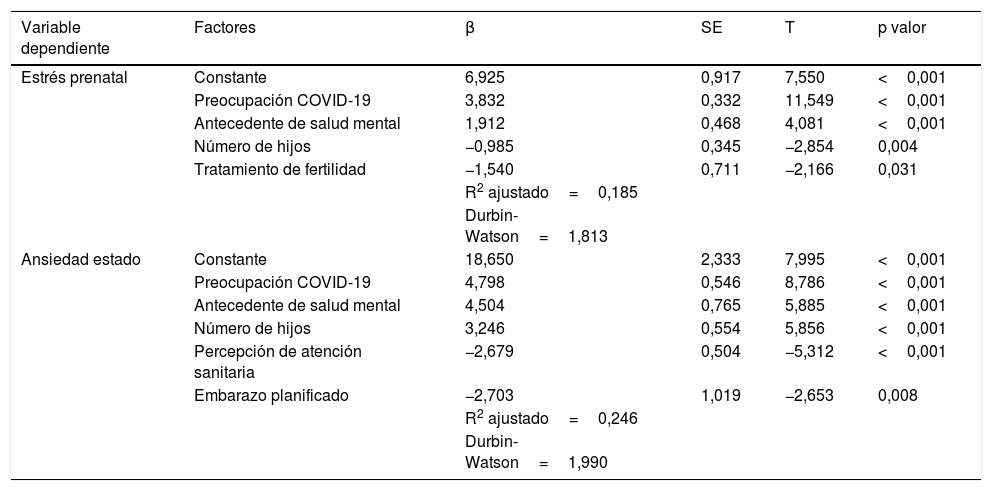
Describir los niveles de estrés prenatal y ansiedad estado en mujeres gestantes residentes en España durante el confinamiento generado por la primera ola de COVID-19, y su asociación con los factores obstétricos, percepción de la atención sanitaria y preocupación provocada por la situación sociosanitaria.
MétodoEstudio cuantitativo, observacional, correlacional y de corte transversal. La población de estudio fueron mujeres gestantes confinadas, reclutadas a través de muestreo no probabilístico por conveniencia y de bola de nieve. Se difundió un enlace web de acceso a un cuestionario online diseñado para la investigación, que recogía variables sociodemográficas, obstétricas, sobre la percepción de la atención sanitaria recibida durante la pandemia y preocupaciones asociadas al COVID-19. Se incluyó también el Cuestionario de Preocupaciones Prenatales (PDQ) y el Inventario de Ansiedad Estado (STAI-S).
ResultadosBasados en las respuestas de 695 mujeres gestantes, los resultados indican que durante la primera ola de la pandemia se observó un nivel medio de estrés prenatal de 16,98 (DS=25,20) y un nivel elevado de ansiedad (M=25,20/DS=11,07). Factores de riesgo determinante del estrés prenatal y ansiedad fueron el nivel de preocupación asociada al COVID-19 y tener antecedentes de salud mental. Un factor de riesgo específico para la ansiedad fue tener más de un hijo/a y un factor protector fue percibir accesibilidad y disponibilidad de la atención sanitaria.
ConclusionesEl periodo de confinamiento por COVID-19 significó un estrés adicional para las mujeres gestantes, poniendo en evidencia la necesidad de atender el bienestar psicológico de dicha población a través de protocolos claros y coherentes en cuanto a control y seguimiento de la salud materno-fetal.
To describe prenatal stress and state anxiety levels in pregnant women living in Spain during the lockdown of the first wave of COVID-19 and its relation with obstetric factors, perception of health care, and concerns about the socio-sanitary situation.
MethodsThe present study is an observational, correlational, and cross-sectional quantitative study. The participants in the study were pregnant women recruited through non-probabilistic convenience and snowball sampling during the lockdown. A web link was provided to an online questionnaire designed for this research, which collected socio-demographic and obstetric variables, perceptions of health care received during the pandemic and preoccupations associated with COVID-19. It also included the Prenatal Stress Questionnaire (PDQ) and the State Anxiety Inventory (STAI-S).
ResultsBased on the responses of 695 pregnant women, the results showed a mean of 16.98 (SD=25.20) of prenatal stress and elevated levels of anxiety (M=25.20/SD=11.07) in the first wave of the pandemic. Risk factors for prenatal stress and anxiety were the level of preoccupation associated with COVID-19 and previous mental health issues. A specific risk factor for anxiety was having more than one child and a protective factor were perceiving accessibility and availability of health care, with clear and consistent pregnancy care and follow-up protocols.
ConclusionsThe lockdown period for COVID-19 was a stressful experience for pregnant women, highlighting the need to address their psychological well-being through clear and coherent protocols in terms of maternal-foetal health control and follow-up.









